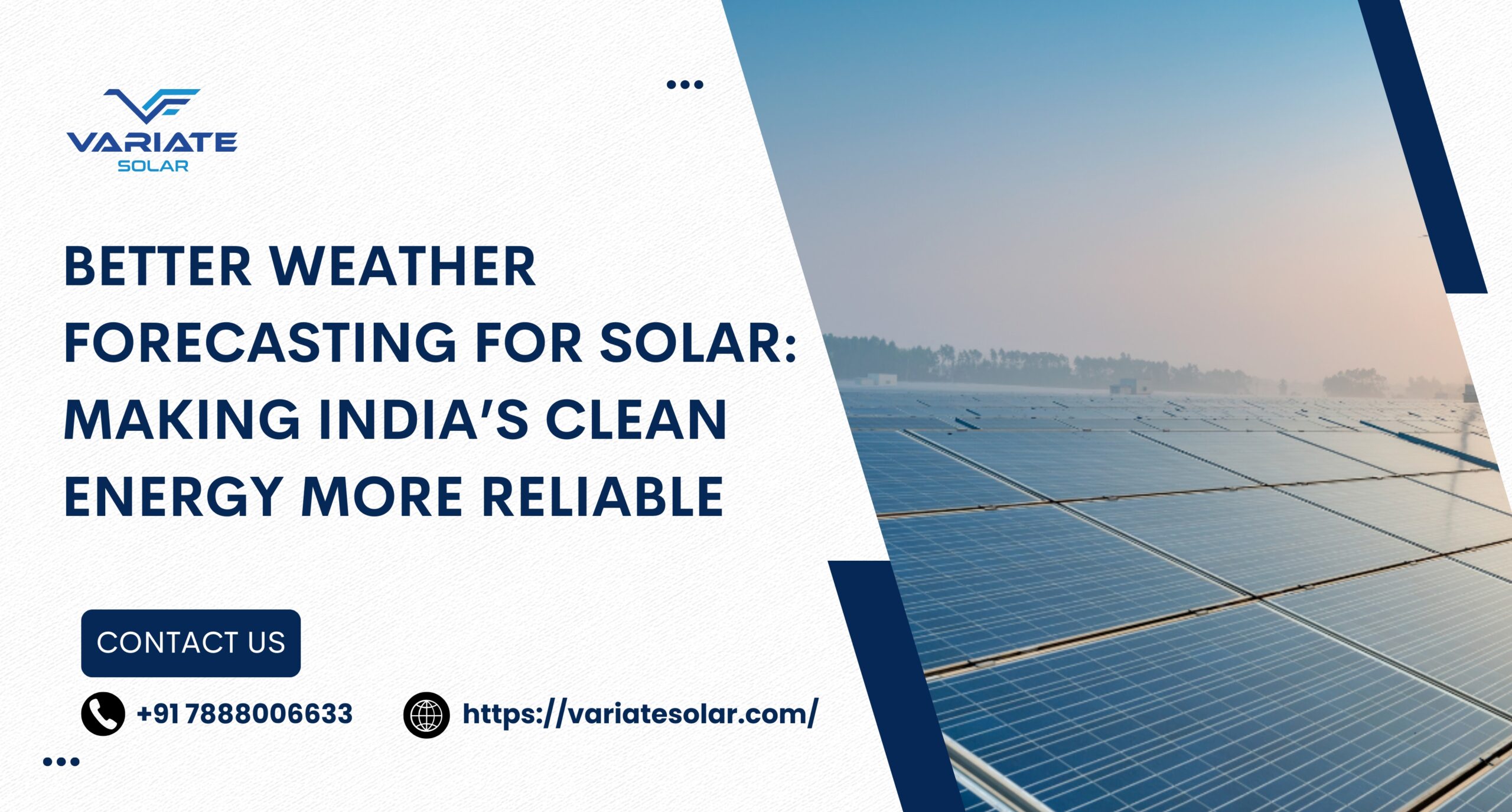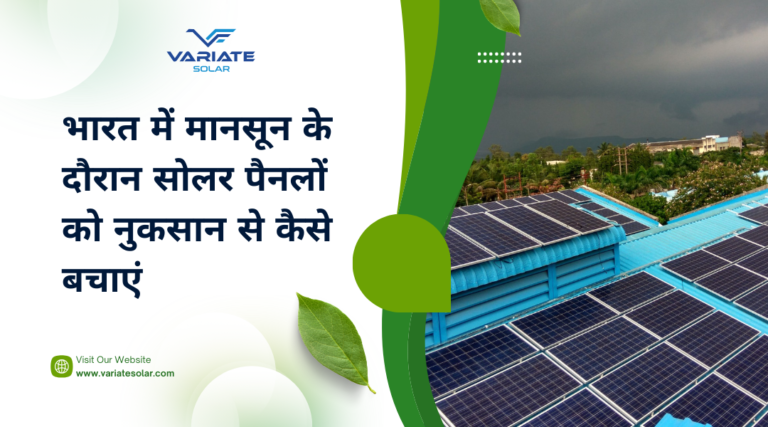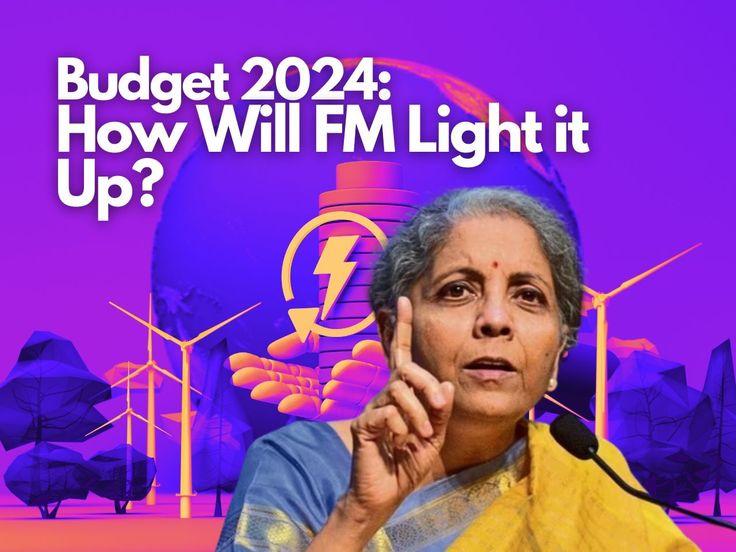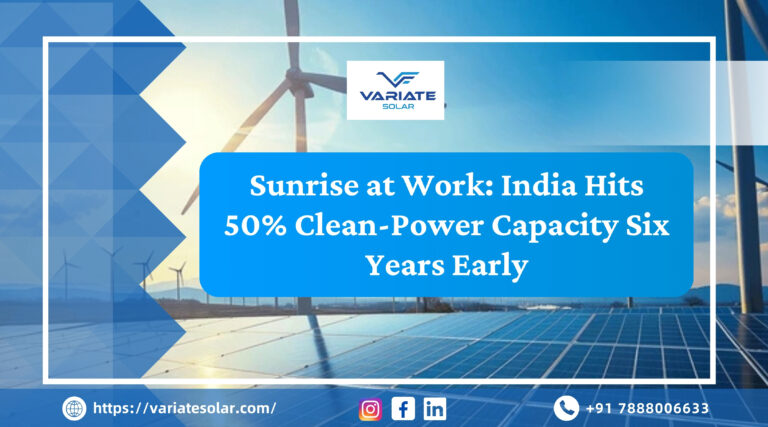Better Weather Forecasting for Solar: Making India’s Clean Energy More Reliable
India is rapidly becoming a global leader in renewable energy. Solar power, in particular, has grown tremendously in the last decade, lighting homes, powering industries, and driving the clean energy transition. However, solar energy has one challenge—it depends on the weather.
If the sun is shining brightly, solar plants generate more electricity. If clouds appear, or if there is unexpected rain, the output falls sharply. This uncertainty makes it difficult for electricity grid operators to balance supply and demand.
To solve this, India is focusing on better weather forecasting systems that can provide accurate, real-time predictions. With recent advancements, including the Bharat Forecasting System (BFS) and 15-minute forecast updates, India is taking a big step toward making solar energy more dependable.
Why Weather Forecasting Matters for Solar
Unlike coal or gas plants, solar energy production cannot be controlled by simply “turning it up or down.” It depends entirely on sunlight. A sudden cloud cover can cause electricity output to drop in minutes.
For a country like India, where the electricity grid operates on 15-minute intervals, this creates major challenges:
- Grid Instability – If supply suddenly falls, the grid can experience power cuts.
- Backup Power Costs – Coal or gas plants must be used as backup, which increases costs and pollution.
- Wastage of Power – Without accurate forecasts, solar plants may overproduce at certain times, and the extra power goes unused.
- Impact on Consumers – Industries, businesses, and households may face fluctuating electricity reliability.
That’s why weather forecasting is the backbone of a renewable-powered grid.
The New Era of Weather Forecasting in India
1. Bharat Forecasting System (BFS)
Launched in May 2025, the Bharat Forecasting System is one of the most advanced weather models in the world. It provides 6 km resolution forecasts, which means it can predict weather changes at a very local level.
This is important for solar plants because even small cloud formations can impact electricity output. With BFS, operators can know when these changes will happen and prepare in advance.
👉 Reference: Economic Times
2. 15-Minute Forecast Intervals
Earlier, forecasts were provided in hourly or longer intervals. But now, India is moving to 15-minute weather updates.
This matches the way the electricity grid operates, making it easier for grid managers to balance supply and demand. With more frequent updates, solar energy can be integrated more smoothly into the grid.
👉 Reference: Reuters
3. Weather Stations at Solar Farms
The Central Electricity Authority (CEA) has made it mandatory for large solar and wind farms (above 50 MW capacity) to install Automatic Weather Stations (AWS).
These stations measure:
- Solar radiation ☀️
- Wind speed 💨
- Temperature 🌡️
- Humidity 💧
By collecting real-time data, these stations improve forecast accuracy and help operators adjust their output predictions.
👉 Reference: Mongabay India
4. AI and Machine Learning in Forecasting
Modern forecasting systems are not just about satellites and radars. Artificial Intelligence (AI) and Machine Learning (ML) are being used to study large amounts of weather data and improve predictions.
For example:
- AI can detect cloud patterns from satellite images.
- ML models can predict solar generation for specific regions.
- Predictive analytics helps grid operators prepare for fluctuations.
This technology-driven approach is turning weather forecasting into a powerful tool for energy management.
Benefits of Better Forecasting for Solar
- Stable Power Supply
Accurate forecasting ensures that sudden dips in solar output don’t cause blackouts. Grid operators can plan for backups in advance. - Reduced Use of Fossil Fuels
With better predictions, the need to run coal or gas plants as emergency backups decreases. This reduces both costs and carbon emissions. - Cost Savings for Companies
Solar operators can sell more power effectively and avoid penalties for under or over-supplying electricity. - Investor Confidence
Investors are more likely to fund solar projects if forecasting makes output predictable and reliable. - Support for National Goals
India aims to reach 500 GW of renewable energy by 2030. Better forecasting will ensure that large-scale solar projects can be integrated without risking grid stability.
Real-Life Example
Let’s say a solar farm in Rajasthan has a capacity of 200 MW.
- At 10:00 am, the forecast predicts clear skies for the next two hours. The operator knows production will remain high.
- At 11:30 am, the system forecasts cloud cover and a drop in generation. The operator prepares to store extra energy in batteries.
- At 12:00 pm, the forecast shows sunshine returning. Stored energy can be released to balance the grid.
This way, better forecasting ensures there are no sudden shocks for the grid, the consumers, or the company.
Challenges Ahead
While progress is strong, challenges remain:
- High costs of installing weather stations.
- Need for training grid operators to use advanced forecast data.
- Regional differences in weather patterns across India.
- Integrating forecasting with battery storage systems.
If India can overcome these challenges, solar energy will become as reliable as conventional power.
Conclusion
Better weather forecasting is more than just predicting sunshine or rainfall—it is the foundation of a stable renewable energy system.
With the Bharat Forecasting System, 15-minute updates, and real-time data from solar farms, India is creating a stronger, cleaner, and more reliable energy future.
As solar energy continues to grow, accurate forecasting will help India reduce dependence on coal, save costs, and achieve its net-zero emissions target by 2070.In simple words: By understanding the sun’s mood every 15 minutes, India is ensuring a brighter and greener tomorrow. 🌞🌍
📚 References
- Reuters – India moves to sharpen weather forecasting amid renewable energy push (Aug 2025) – Read Here
- Economic Times – Bharat Forecasting System launched: highest-resolution weather model (May 2025) – Read Here
- Mongabay India – Weather forecast push to support India’s renewable energy grid (July 2025) – Read Here
- Down to Earth – India to improve weather forecasting accuracy for better power demand estimation – Read Here






